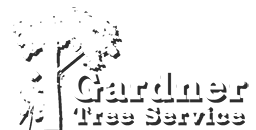What Homeowners Need to Know Before Cutting, Trimming, or Removing Trees
In South Louisiana, trees are more than landscape features — they’re part of the culture. From majestic live oaks lining historic streets to bald cypress standing guard in swampy backyards, trees add beauty, shade, and value. But before you break out the chainsaw or call in a crew, you’ll want to know the local laws. Many parishes have specific rules and permitting requirements when it comes to trimming or removing trees — especially large, historic, or protected species.
Here’s a quick guide to tree permits and regulations in key South Louisiana parishes:
Orleans Parish (New Orleans)
New Orleans takes its trees seriously. If the tree is located on city property (such as the neutral ground or a sidewalk strip), it’s protected by the Department of Parks and Parkways.
Permit required? Yes, for pruning or removing city trees.
Private property trees? Permits are generally not required for private trees unless the tree is considered a “heritage tree.”
Notable rules: Unauthorized removal or damage to a public tree can result in fines.
Jefferson Parish
In unincorporated Jefferson Parish, tree removal on private property usually doesn’t require a permit — but there are exceptions in commercial developments or planned subdivisions.
Permit required? Rarely for private homes, but always check before removing large live oaks.
Tip: In parts of Metairie and Kenner, local neighborhood associations may have stricter tree policies.
St. Tammany Parish
St. Tammany is growing fast, and that means development oversight. The parish often requires tree preservation plans for new construction.
Permit required? Yes, for new developments or if removing large live oaks and cypress trees over a certain size.
Protected trees? Yes — especially native species like live oak and longleaf pine.
Enforcement: Fines may be issued for unauthorized clearing.
Tangipahoa Parish
Tangipahoa is generally more relaxed on individual tree removal, but city limits (like in Hammond or Ponchatoula) may have separate ordinances.
Permit required? Not typically, but check with local municipalities.
Tip: Commercial properties and large tracts of land may trigger environmental review.
Lafayette Parish
Lafayette has urban forestry regulations, especially for commercial projects or subdivisions.
Permit required? For public trees and development-related removals.
Private yards? Typically not — but don’t touch city-maintained trees without permission.
Bonus: Lafayette has a “Tree Board” that oversees tree planning and education.
East Baton Rouge Parish
Baton Rouge requires permits for tree removal tied to development plans but has fewer restrictions for homeowners.
Permit required? Sometimes — especially for protected tree species or land over one acre.
Tip: In flood-prone zones, removing trees can impact drainage, so expect review if you’re near wetlands or bayous.
General Tips for Homeowners
-
Call before you cut: If you’re unsure, contact your parish planning or zoning department first.
-
Document the tree’s location: City vs. private property is a big distinction.
-
Hire a certified arborist: They can help navigate red tape and avoid costly mistakes.
-
Watch for nesting season: Some birds (especially in wetlands) are protected under federal law.
Bottom Line
In South Louisiana, tree regulations vary — but ignorance isn’t an excuse. What you cut could cost you, especially if that tree sits on public land or is part of a protected species list. When in doubt, check local ordinances and consider getting a professional opinion before taking any action.
Need help with a tricky tree? Our team knows the regulations inside and out — and we’re happy to help keep your yard safe and compliant.


